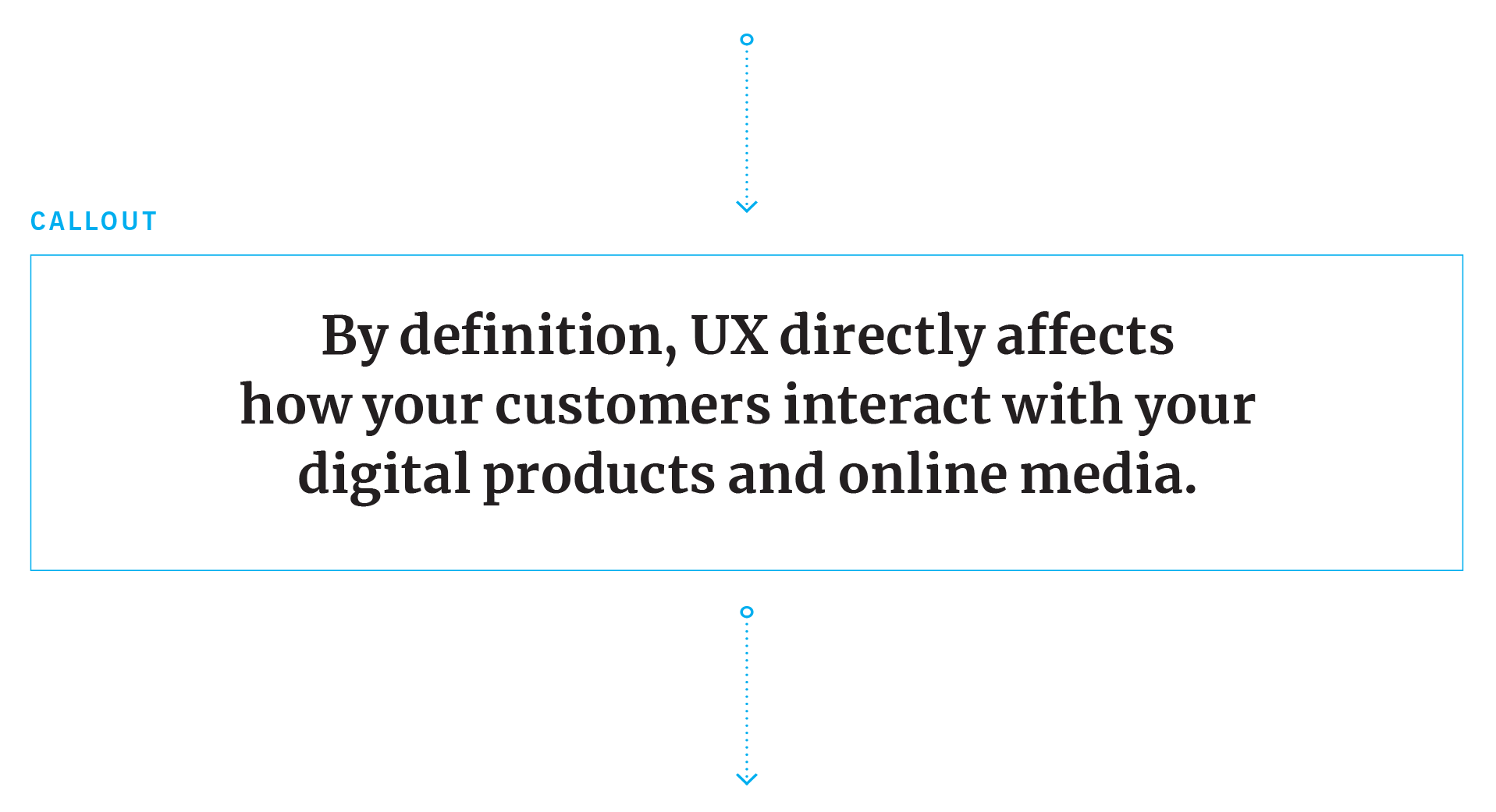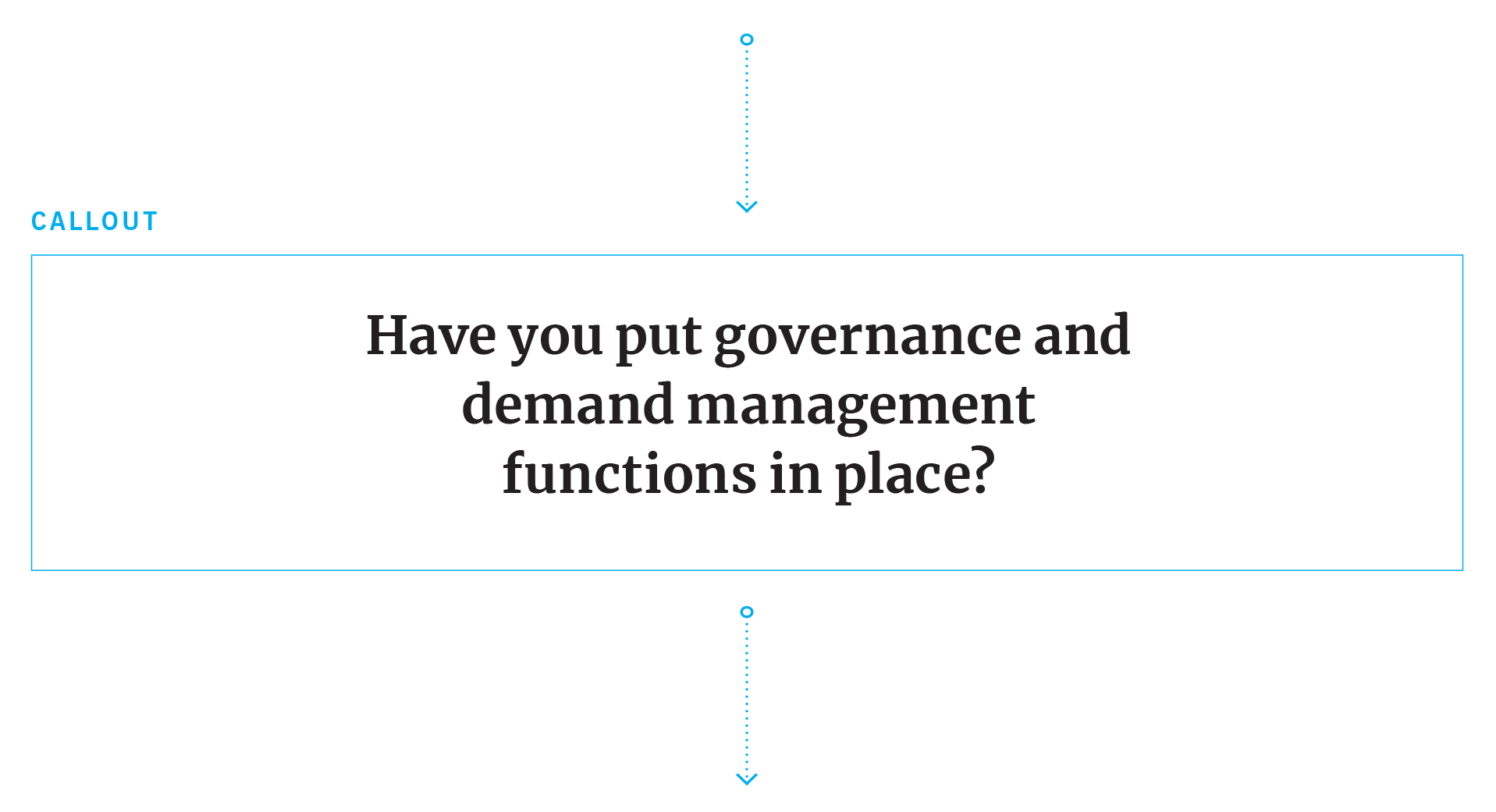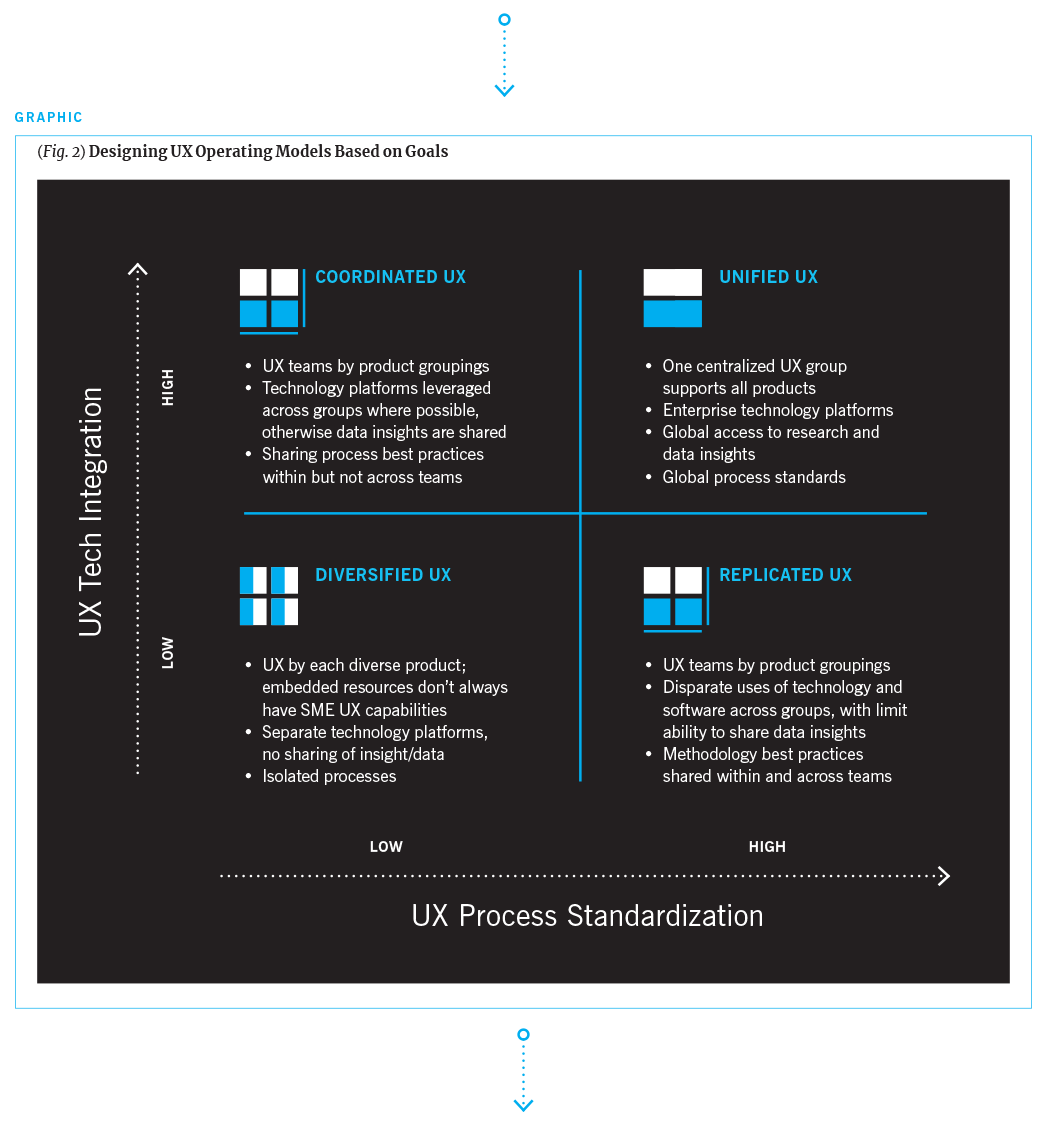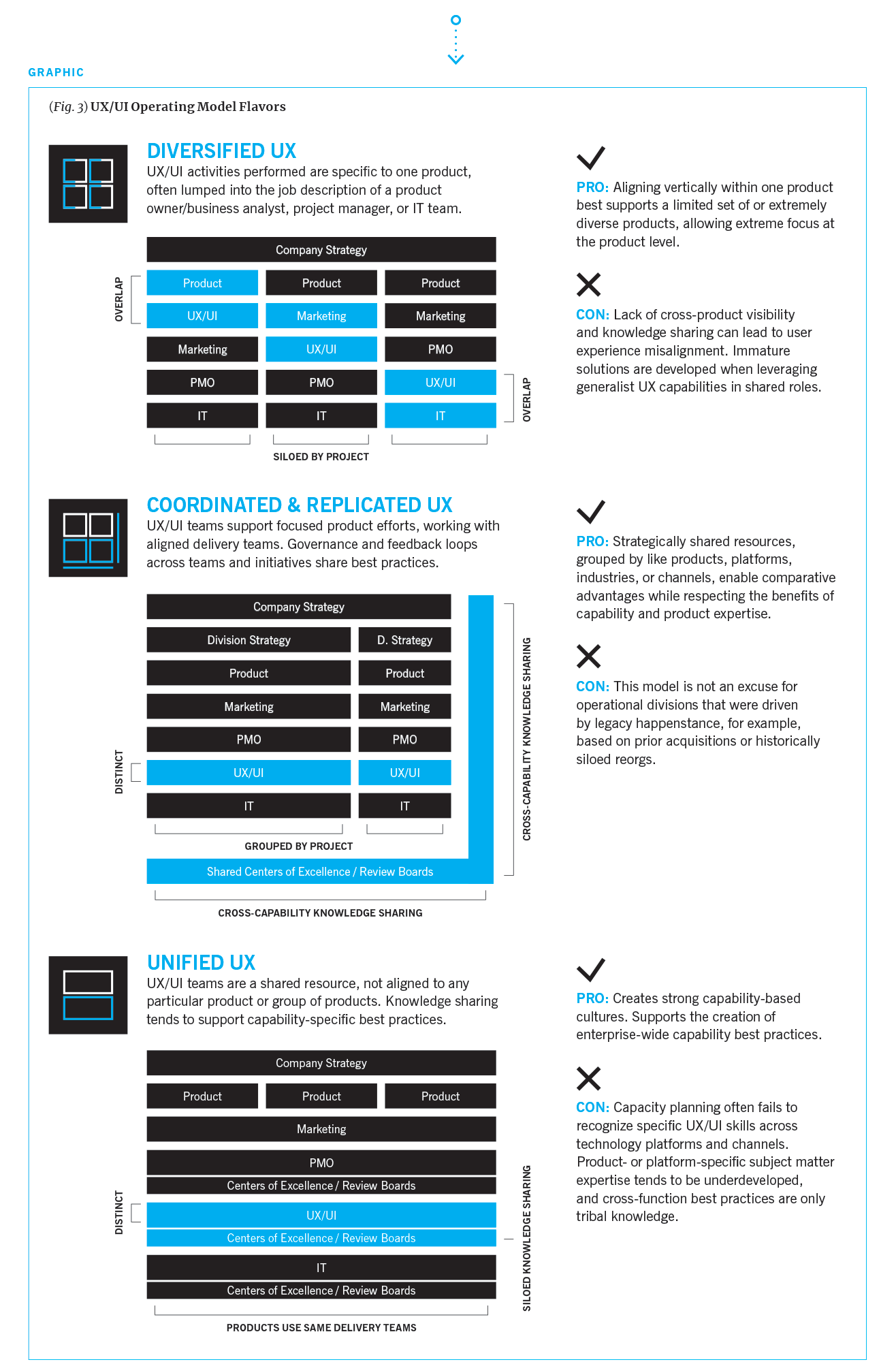 A high-functioning user experience (UX) team is key to creating a successful customer experience (CX). By definition, UX directly affects how your customers interact with your digital products and online media. Yet many organizations struggle with where the capability sits relative to other teams, and how to best serve varied product types.
A high-functioning user experience (UX) team is key to creating a successful customer experience (CX). By definition, UX directly affects how your customers interact with your digital products and online media. Yet many organizations struggle with where the capability sits relative to other teams, and how to best serve varied product types.
Let’s explore an organized approach to addressing organizational and operational UX challenges, considering how your UX teams’ operations affect your customer experience.
Company leadership (from product owners to the C-suite) are ever increasing their focus on customer experience, transforming how they operate and interact with their market. Strategic planning has evolved from planning around projects to planning around products, and better aligning their customers’ experience with those products. To meet customer needs quickly, IT delivery is commonly shifting from the Waterfall delivery model to different flavors of Agile delivery. However, companies struggle to operate in an agile fashion if they operate within legacy IT systems, or within a misaligned organizational model.

What is your current state?
- Is your digital customer experience similar across your products? Why not? Is it because you have distinctly different teams developing content in silos using different tools?
- Is your user experience mature? Why not? Do you have product owners, or developers, serving dually as UX subject matter experts?
- Do your customer experience and user experience teams play well together, working to the same goals across the customer journey? Is everyone aligned on what the UX function does? What is UX? What isn’t it? And what is the context of UX within the enterprise?
- Are you sharing best practices and data insights across teams?
What are your goals?
- At the most basic level, does your firm agree on what being “customer focused” means?
- What defines an ideal user experience? How have you aligned corporate goals and “voice of the customer” metric targets against cultural dynamics and company constraints?
How should you operate?
- How should UX and CX operate in a product-led organization (e.g., centralized versus integrated into product verticals, the degree of standardization, the degree of coordination)?
- How should UX interact with functions such as marketing, product, and delivery?
- What functions will be centralized, what will be distributed, and what will be embedded?
- How should UX teams interact with each other internally? How should UX fit into CX?
How should you work?
- Do any internal processes need to change? Where are your internal interactions and handoffs? How will you make the best use of supporting technology, and how will teams share access to and insights about the data?
- Who makes decisions and how are they made?

How should you organize?
- What are your roles and responsibilities? How do you define career paths? What’s the best way to support UX career growth, considering team members’ expertise in product or technology?
How should you change?
- Will you take advantage of change-management methods? How will you communicate?
- Have you put governance and demand management functions in place?
- How can you communicate the rationale for your chosen transformation—and how that transformation aligns with your firm’s goals?
To begin answering these questions, you may find it helpful to ground yourself in the key functions UX teams typically perform and how they typically interact with other groups. Every company will vary, so laying the groundwork and defining the nuances in a specific company are important.

- Unified: “We need to make UX a core competency. It needs to be an efficient function with standards and best practices.”
- Coordinated: “Each product group should run UX their own way, but we need to use the same tools. We should share licenses, data insights, and insights into what’s working.”
- Replicated: “UX should run independently by product, but we should at least operate consistently.”
- Diversified: “Let the product groups run and control UX. Our No. 1 priority is to optimize user experience by product.”
We can plot these flavors of operational organization on a two-by-two chart.

It often makes sense to blend two mixed type models into one, where UX team technology integration and process standardization are both high, but the teams remain split across product groups.
Each model has pros and cons. Any one of them may be right for your organization, depending on your product set, maturity, and resource capabilities.
Once you have systematically explored your current state, your goals, and your desired operational model, you are well equipped to transform your UX team to better serve your customers.

